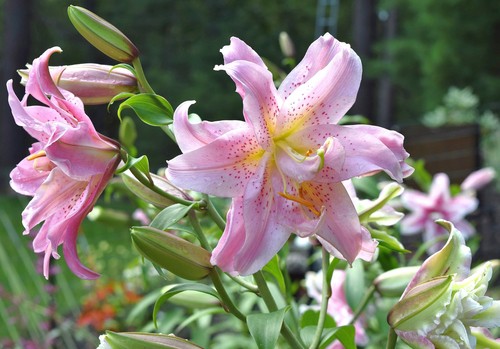Last updated on May 17th, 2022
Our site is reader supported, this means we may earn a small commission from Amazon and other affiliates when you buy through links on our site.
Lillies are a very popular group of plants thanks to their fragrant flowers but at what point should you deadhead those flowers and should you even do it in the first place? Do you have to cut them off or can you leave them?
Deadheading Lily plants
The process of deadheading is fairly simple. Once you see the flower has faded you can break it off very gently with your hands or you can use a clean pair of secateurs and simply snip it off. Avoid cutting any of the leaves because those are imperative when it comes to storing energy for the winter.
Is deadheading Lily plants necessary?
Deadheading refers to the process where you remove spent flowers from a plant. Most of the time people deadhead their flowers to encourage new flowers and prolong the flowering period and this is the case for most plants. However, this is not what happens with Lillies.
Recommended secateurs
Lillies don’t flower more than once on the same stem in the same year
Once the Lily has finished flowering, you won’t get any more blooms from that stem. Cutting off the flowers won’t give the plant room for new flowers. So why do you have to do it?
To improve the appearance
Deadheading Lillies is a good idea because it cleans up the overall appearance of your Lily plant. If you are growing them for their beautiful flowers, having a smattering of spent flowers detracts from that.
Don’t cut back the foliage
You also want to keep the foliage through the summer to help the plants come back the following spring and given the plants have a finite amount of energy, removing the spent flowers helps your plant focus more on keeping the foliage all year round.
Energy allocation

Don’t let them go to seed so that you get bigger and better flowers the following year
That being said, remember that your Lily flower can be pollinated and if that happens it will shrivel up in order to reproduce by way of a seed pod. If you plan to use the same bulb to produce more Lillies the following year, you can’t let this happen. Producing the seed pods requires energy from the plant that would otherwise be allocated to storing carbohydrates in the bulb for next season.
If you don’t deadhead your Lily, those carbohydrates are unable to be stored because the plant will either focus on making the seed head or preparing for the next year. It can’t do both. So you have to decide what you plan to do with your plants the following year.
Last update on 2025-10-31 / Affiliate links / Images from Amazon Product Advertising API


